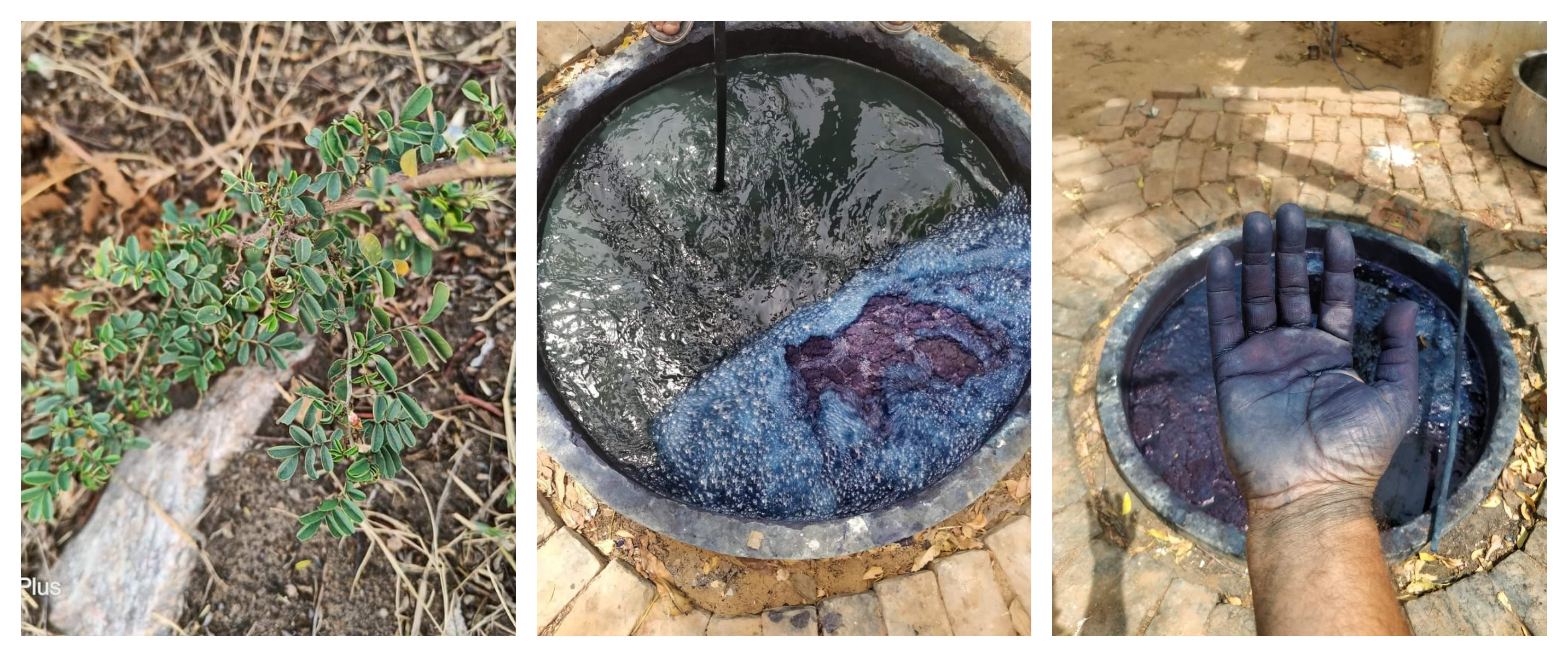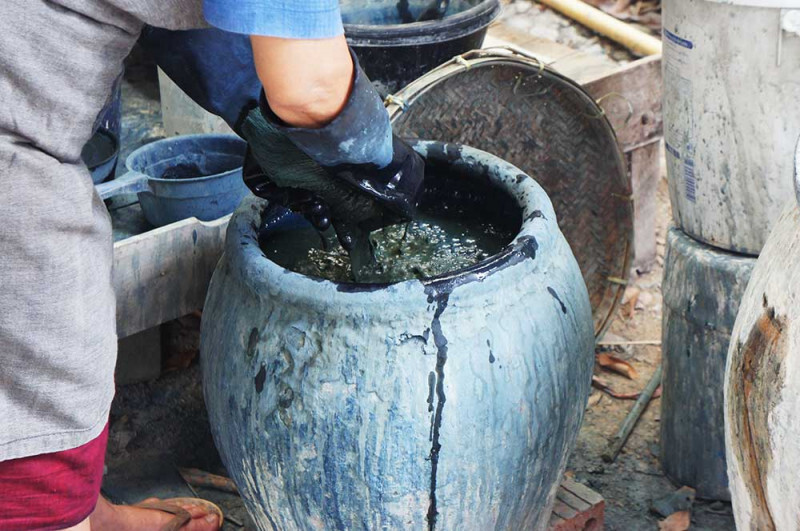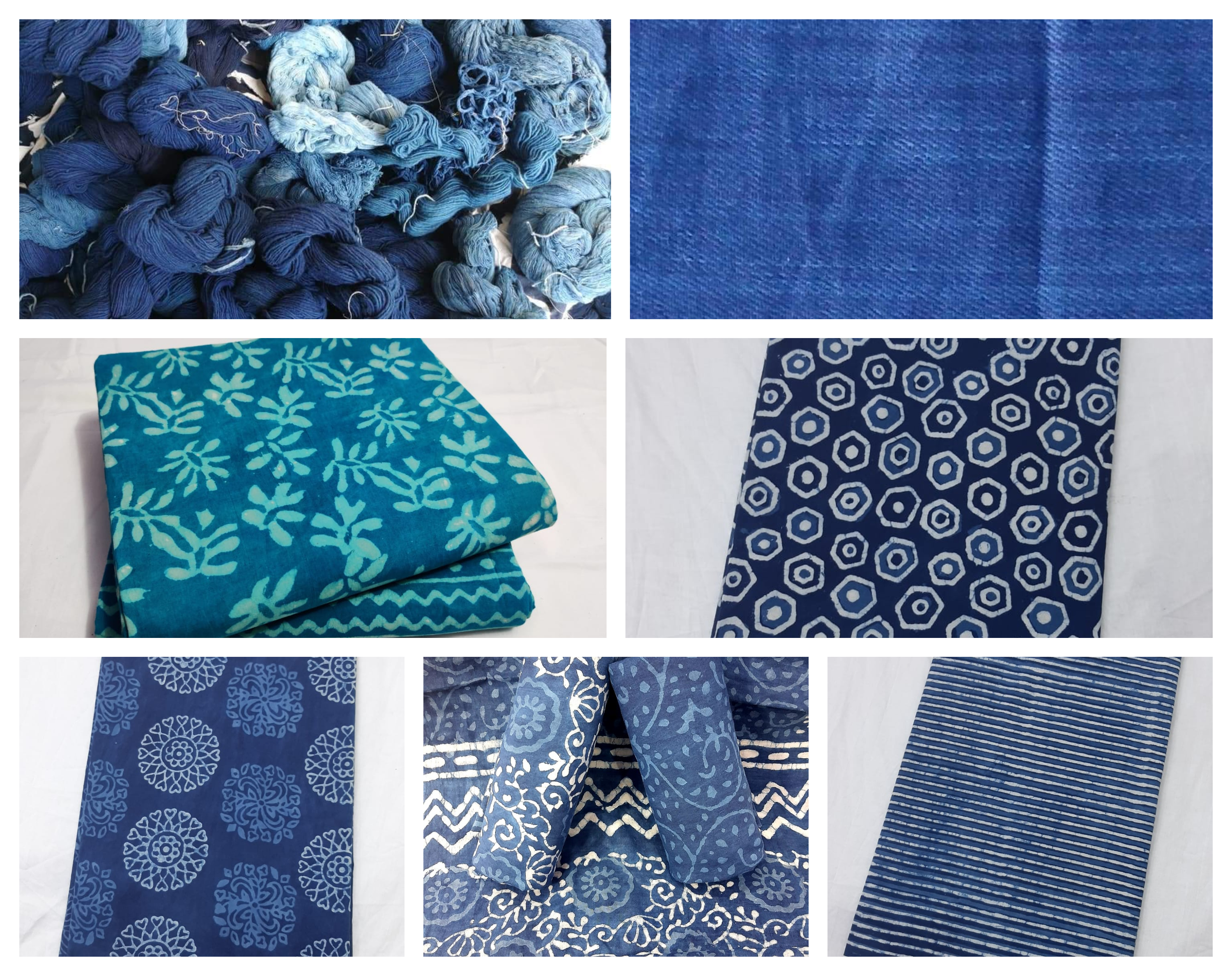
INDIGO IS A HEALTH-GIVING PLANT
In India, indigo has been used in Ayurveda and other traditional medicine systems to cure many ailments, despite the fact that the whole plant contains indican, a carcinogenic glucoside. The plant also contains rotenoids which are effective insecticides against mosquito larvae.
Early studies have shown that the alcohol extracts of indigo’s stems and leaves protect the liver from damage by chemicals such as carbon tetrachloride, found in cleaning agents, refrigerants, and aerosols and the leaves can help to lower blood pressure.
In traditional Chinese medicine, indigo has been used as a pain reliever, for fever, and inflammation and to purify the liver and blood. In Indian traditional medicine, it has been used to promote hair growth and is used as a hair dye for black hair
HOW IS INDIGO PREPARED?
Most of the indigo used commercially comes from the plant species Indigofera tinctora, which thrives in tropical climates. The leaves of this plant are harvested and processed to yield the dye. One unusual fact that distinguishes indigo from other dyes, is that the dye is not present in true form in the plant. Instead, it has to be extracted from the leaves through a detailed process.
This manufacturing process involves the following steps:
- The freshly harvested leaves are placed into a fermentation tank, and an enzyme called indimuslin is added to it.
- The enzyme hydrolyses indican in the plant leaves and releases a chemical called indoxyl into the surrounding liquid. It is left to sit for several hours for the process to complete.
- The resulting liquid is then mixed with air using paddles, and the air oxidises it into the pigment.
- The upper layer of the liquid is then removed, and the pigment can be seen as a blue sludge at the bottom of the vessel.
- This sludge is quickly heated to stop further fermentation. It is then dried to form a thick paste or powder. This is the dye that we use to colour cloth.

Indigo dyeing — The Process
Indigo is a dye that doesn't need a mordant to adhere to cloth, and it works best on natural fibers like cotton, silk, and wool. There are plenty of recipes and ingredients to use for the process if you want to attempt it. Although time-consuming, it is relatively straightforward and easy.
The materials you need for indigo dyeing are indigo powder, water, a big stainless steel pot, soda ash to create the desired pH, and wooden and plastic tools. The traditional method uses a natural fermentation vat (like the one above) - this is how all of our fabrics are dyed.
- The entire process of dipping the cloth has to be performed several times (at least 5 times or more), with drying times in-between, to yield a lasting colour.
Indigo Uses
Our wardrobe staples are dyed with indigo. The dye is used in different concentrations and methods to create different varieties of designs and colours. The dyeing characteristics of indigo make it a great choice for Shibori and Batik techniques. Shibori is a traditional Japanese tie-dye technique where we bind, fold or stitch cloth before dyeing. This yields amazingly intricate and unique patterns after the dyeing process. Batik is an Indonesian technique of wax-resist dyeing, where wax is applied in specific patterns, and the cloth is dyed. The areas with wax resist the dye, while the rest of the cloth turns blue.
Here are photos of our indigo-dyed fabrics,
